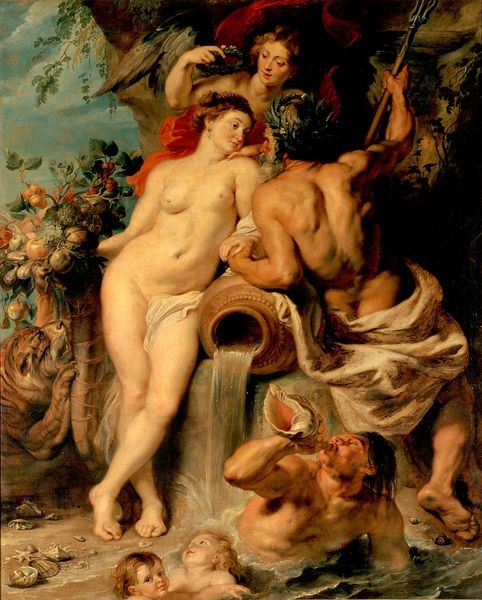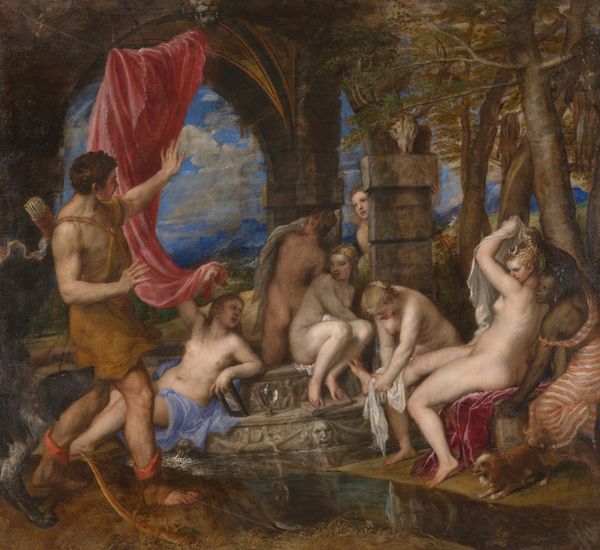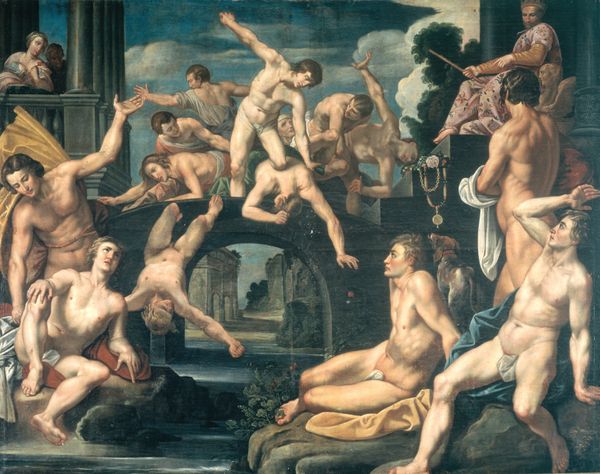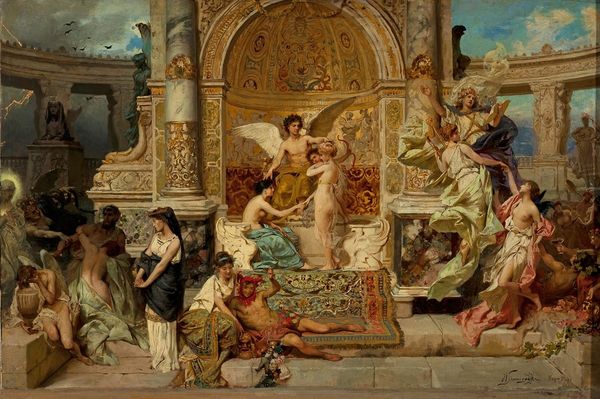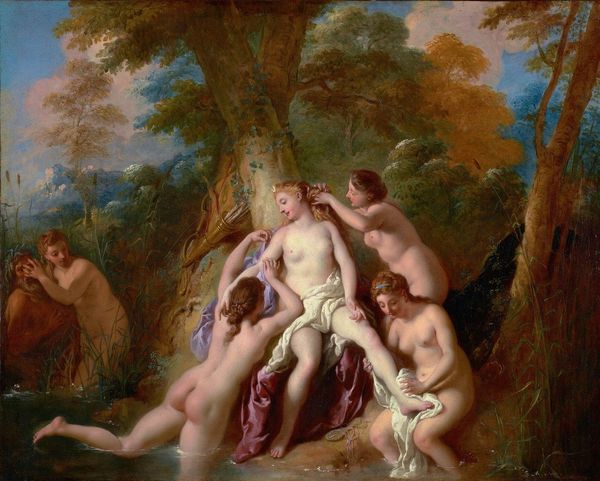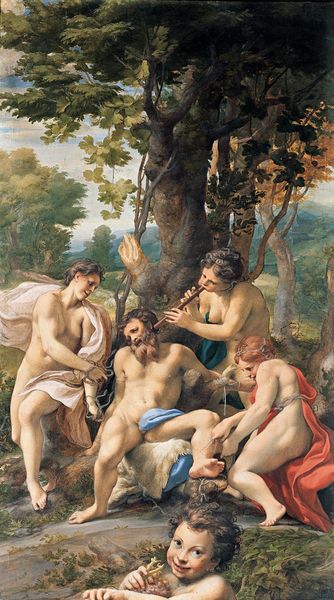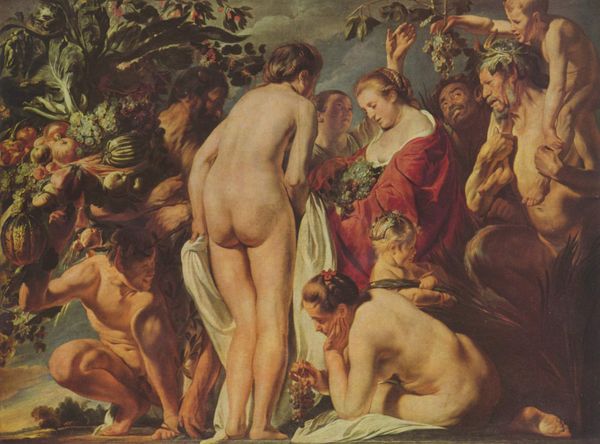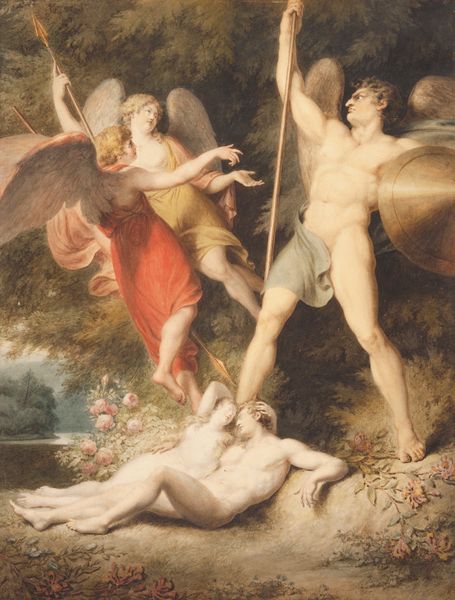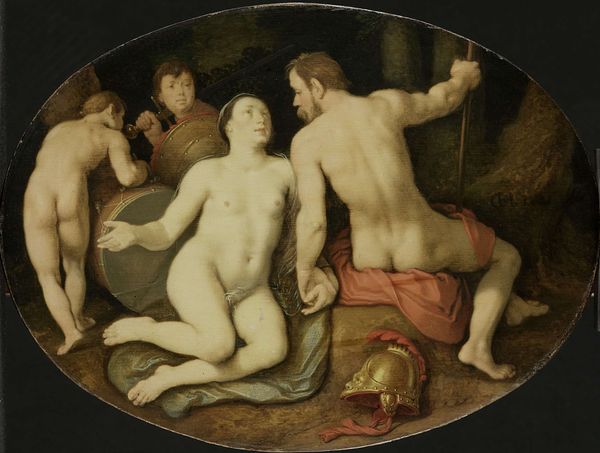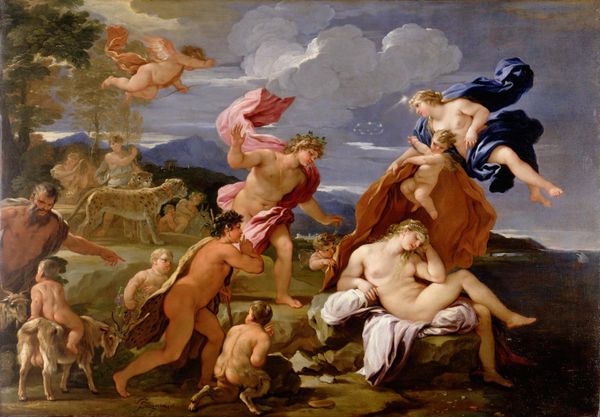
painting, oil-paint, fresco
#
high-renaissance
#
allegory
#
painting
#
oil-paint
#
figuration
#
fresco
#
oil painting
#
mythology
#
history-painting
#
italian-renaissance
#
nude
Copyright: Public domain
Curator: Before us, we have Giulio Romano's "Venus and Mars Bathing," created around 1528. Editor: It’s immediately striking—an abundance of figures arranged with incredible dynamism, almost as though a snapshot of movement were frozen in time. Curator: Indeed. The scene depicts the Roman gods Venus and Mars. They're surrounded by putti attending to their needs as they prepare for a bath in what looks like a rather luxurious Roman bath house. It was most likely painted as a fresco, maybe part of a larger decorative scheme, meant to display wealth and prestige, as mythological themes were particularly fashionable in the High Renaissance. Editor: I'm struck by Romano's approach to color and composition. The use of warm, earthy tones creates a sense of intimacy, almost voyeurism. Notice how the forms overlap, creating depth and visual interest while the overall pyramidal composition draws the eye. Curator: Considering the social context, one must remember the rising popularity of humanist philosophies. The artwork shows an idealised view of classical mythology and the appreciation of beauty. Also note that eroticism and sensuality became part of the upper-class, educated population's understanding of visual rhetoric during that era. Editor: There is the question of virtuosity as well, evident in Romano’s handling of the oil-paint. I think there's more to be found in the subtle nuances and in the anatomical detailing too—it would seem the forms are so expressive because of the clear understanding the artist has about musculature, especially apparent with Mars. Curator: I agree, the artistic ability certainly points to something. Its place within the history of art becomes much richer once it's seen as an artwork meant for the consumption of the aristocracy—an expression of their political status via aesthetic taste. Editor: Fascinating. I can certainly appreciate that perspective. For me, the core pleasure emanates from simply engaging with this artwork and absorbing the talent apparent in every brushstroke. Curator: It offers layers of interpretation. That’s what makes Romano such a fascinating artist to discuss in the historical context of the 16th century.
Comments
No comments
Be the first to comment and join the conversation on the ultimate creative platform.
